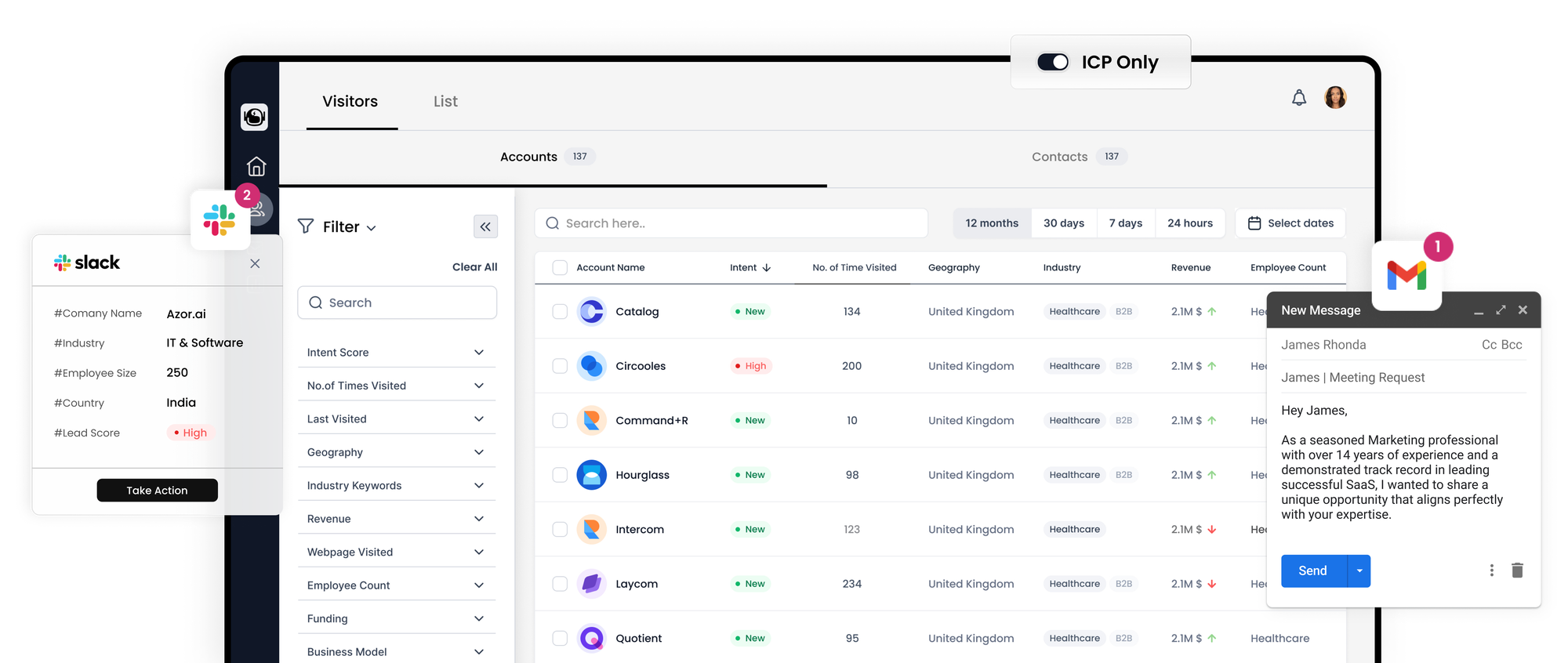Redefining B2B Lead Generation in the Digital Age

Before 2020, tech industry stalwarts in B2B sales were accustomed to a rigorous travel schedule, engaging with clients face-to-face, seeking prospects at events, and personal interactions at conferences. This approach, surprisingly low-tech for the sector, was fundamental to generating leads and closing sales.
However, the pandemic-induced shift has grounded even the most frequent flyers, presenting them with a new challenge—meeting substantial quotas with reduced or zero travel. Despite a yearning to return to pre-pandemic norms, it's uncertain whether clients are as eager, or if corporate policies will continue to limit in-person vendor interactions. In fact, over 70% of B2B decision-makers now show a preference for remote or digital self-service interactions.
This shift begs the question: How can B2B sales professionals effectively source new leads under these new preferences for doing business?
Drawing from a real-life transformation at a global tech conglomerate, which saw a successful pivot to digital lead generation, and leveraging over three decades of collective experience in guiding Fortune 500 sales transformations, we propose a five-stage framework to adapt to this evolved lead generation landscape.

Understanding Modern Client Preferences
Organizations need to recalibrate their support for B2B sales activities to thrive in the current context. Encouraging sales reps to amplify prospecting efforts, leveraging digital communication platforms, and hosting virtual events are steps in the right direction but fall short in bridging the pipeline gap, particularly for those without the cushion of stable accounts or recurring business.
The key to generating leads now lies in engaging with potential clients on their new digital stomping grounds, primarily on professional networks like LinkedIn and Twitter. Sales personnel must step into the shoes of thought leaders, actively participating and influencing digital discourse—roles traditionally reserved for colleagues in product development or professional services.
This transformation isn’t feasible for salespeople to undertake alone; it demands concerted organizational backing. Sales leaders, especially in dynamic sectors like tech, must spearhead the creation of market-ready content—white papers, technology roadmaps, pitch decks—to position their sales teams as industry thought leaders and solution-focused consultants, an approach that's critical in a digital-first world.
The Modern Blueprint for B2B Sales Success
1. Assemble a Multifunctional Go-to-Market Squad
In today’s dynamic sales landscape, forming a cross-disciplinary team is vital for creating standardized, globally repeatable go-to-market strategies. Streamlining is the priority, aiming for a minimal set of three industry-centric marketing tools. The global tech firm's approach begins at the regional level, calling upon diverse stakeholders for content generation and utilizing input from field sales and marketing teams worldwide.
2. Develop Content with a Client-Centric Narrative
The produced content should be outcome-oriented, addressing clients' challenges rather than focusing on the products being sold. Establish a repository for this content, accessible both internally for sales teams and externally via social and digital channels. The global technology company exemplifies this by paring down its extensive sales collateral to essential items that emphasize client value, thus making it easier for the sales force to convey the benefits to potential clients.
3. Distribute Content Effectively
Raising awareness within the organization about the new go-to-market strategy and the accompanying content is essential. Ensuring sales teams can easily access and disseminate this content is crucial, with platforms for distribution and sales productivity tools for subsequent tracking and analytics.
4. Facilitate Sales Leads Through Demand Generation Collaboration
Sales teams should actively distribute content to potential leads via email and digital platforms. In instances where leads originate from the corporate site, it’s imperative that the sales force has access to this information to maintain motivation and effectiveness.
5. Implement Multilevel Outcome Monitoring
Sales representatives should have the means to track their distributed content's performance, understanding its influence on potential deals. The organization should capitalize on successful sales content and phase out underperforming collateral. Instituting internal metrics to optimize content quality and lead generation is crucial for maintaining a value-driven content library.
Tangible Benefits and the Road to Adoption
The investment in reshaping sales tactics has borne fruit, both in measurable success and in more nuanced ways. Sales professionals like Tiffany are quickly adapting to the innovative approaches, leading to a surge in lead acquisition. Concurrently, organizations are reaping multiple benefits: streamlined support for sales initiatives on a global scale, expedited product enhancements and feedback loops, minimized duplication in go-to-market strategies, superior content quality, and reduced timeframes for engaging potential clients. Collectively, these advancements translate into increased revenue potential and cost reductions by deploying a robust, globally coordinated framework.
However, transitioning to this model is not without its hurdles. In our study of the global tech enterprise, various challenges surfaced, notably the substantial effort demanded and regional disparities in go-to-market strategies. Yet the most formidable obstacle was managing the transition. Initially, there was hesitance from sales and corporate leaders due to regional preferences and the necessity for industry-tailored solutions. Those driving the change had to navigate existing content biases and ingrained lead generation processes to usher in successful adoption. Substantial effort was dedicated to securing executive endorsement from the outset. By highlighting global triumphs and pinpointing areas in need of attention through data, the team shifted leaders from skeptics to advocates of the program.
While specific organizational challenges may vary, the overarching hurdle is consistent: sales professionals are navigating uncharted terrain. By equipping them with enhanced lead generation practices, companies can flourish in today's digitally transformed marketplace.
